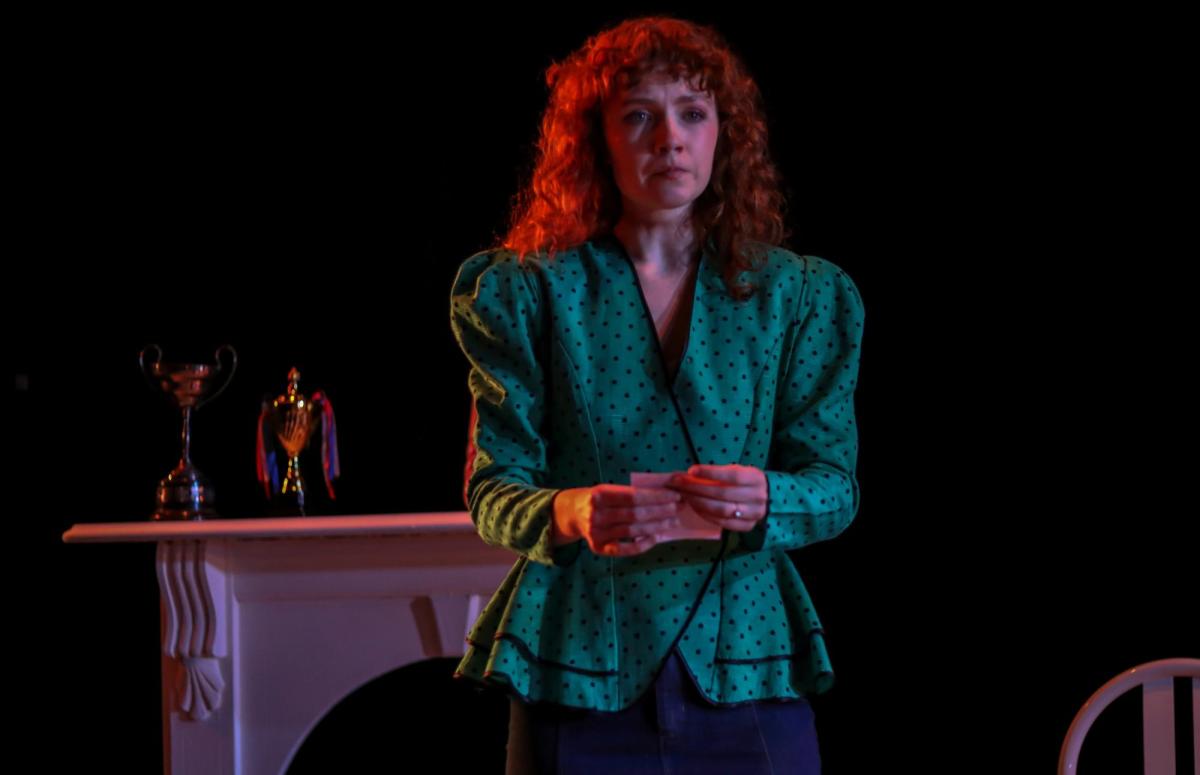Dial M for Murder: quick links
Frederick Nott’s 1952 play Dial M for Murder, which was quickly snapped up and made popular by filmmaker Alfred Hitchcock, is a much-loved mystery thriller that turns the whodunnit genre on its head. Nott reveals the who, the where and the why within the play’s first act and what’s left is to see how Tony Wendice’s plan to have his wife killed in their home, so he can inherit her small fortune, plays out.
Dial M for Murder: production struggles to deliver
There’s opportunity to draw both suspense and dark humour out of the snappy script but this production struggles to deliver on both counts. Of particular consternation is Tyrie Aspinall’s choice of emphasis and inflections that contradict intuitive speaking patterns – even the mid-century Oxbridge fellow one assumes he is trying to emulate.
Further, in an attempt to portray disconcerting calm, Aspinall comes off as wooden. That is not to suggest the rest of the cast run rings around him however, though Leon Walshe undoubtedly offers the strongest performance as Mrs. Wendice’s earnest lover.

Dial M for Murder: pedestrian performances
There are flecks of intriguing direction by Dean Drieberg, like the transitions between acts and the second part of act one that keeps the audience in a prolonged state of suspense, albeit mild. But it’s not enough for the production to compete with the plethora of tv shows and movies available to the public at the click of their fingers. More importantly, it’s not enough to overcome the cast’s pedestrian performances or the challenge of engendering fear and comfort all in the same one room apartment.
The change in time periods throughout the show, though delivered seamlessly by set designer Jodi Hope, is an unsatisfying beginning and end of exploring enduring issues of truth and justice and male violence. All in all, this is a rare show of middling vision from Drieberg.
Read: PHANTASM review: four dancers explore reality and beyond
But a good mystery is a good mystery and Nott’s narrative will keep you guessing, with a need to see how the story will end, to the point you may not notice the show going 30 minutes over time. For a genre that saturates our screens, Dial M for Murder feels like a missed opportunity to show how mystery, suspense and intrigue can transform on stage.
Dial M for Murder will be performed at Theatre Works, Melbourne, until 16 August 2025.
Also on ArtsHub
The Orchard review: Pony’s Cam’s radical interpretation of Chekov classic at the Malthouse
You thought The Cherry Orchard was a play about a bunch of melancholy Russians paralysed by self-absorption and regret, right? Theatre Collective Pony Cam’s forensic dissection of the original play’s themes highlights modern day parallels and expands the focus.
What is valuable these days? Places with established history, nourishing the community; just how much profit can be made from the land once the previous buildings or creations are carelessly demolished? Is money the only driver of every part of life, to the exclusion of feelings, memories and human potential?
The excellent cast has clearly researched the implications of their concept thoroughly, and nothing of Chekov’s dialogue is used – remarkably, the whole evening is improvised based on a solid foundation of information about the themes.
At the beginning of the show, we are told that some audience members will be onstage throughout, in the background of the action, wordless extras as the fate of the orchard is decided; or allowed to unfold, through delay, indecision and inaction. They are active moving around the perimeter of the block of platforms in the centre.
The five cast members come and go from the platform, and each ‘beat’ of conversation, punctuated by a conveniently-to-hand drum, begins the same way: Hey, what are we going to do about the orchard?’ followed by random questions, non sequiturs, some very funny and tentative ideas about what to do with it, while doing and deciding nothing. Read more…






